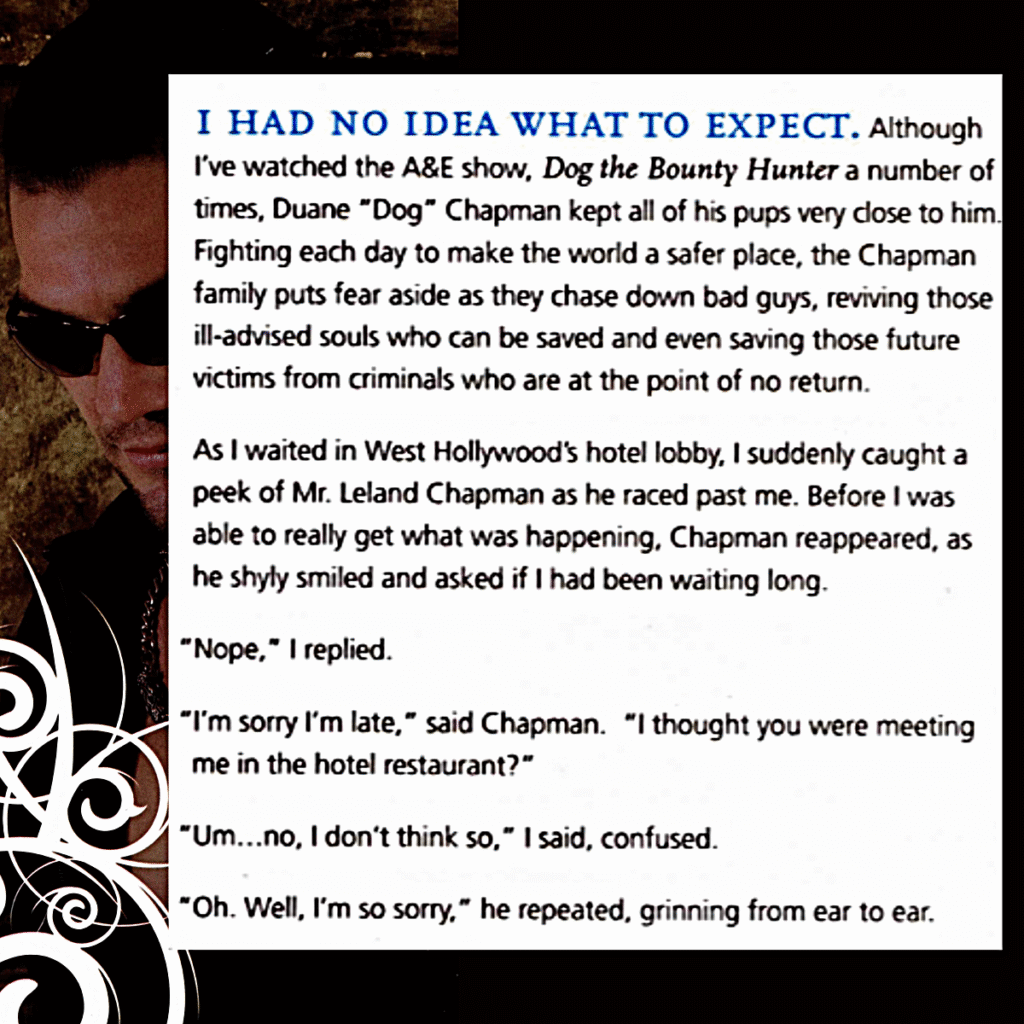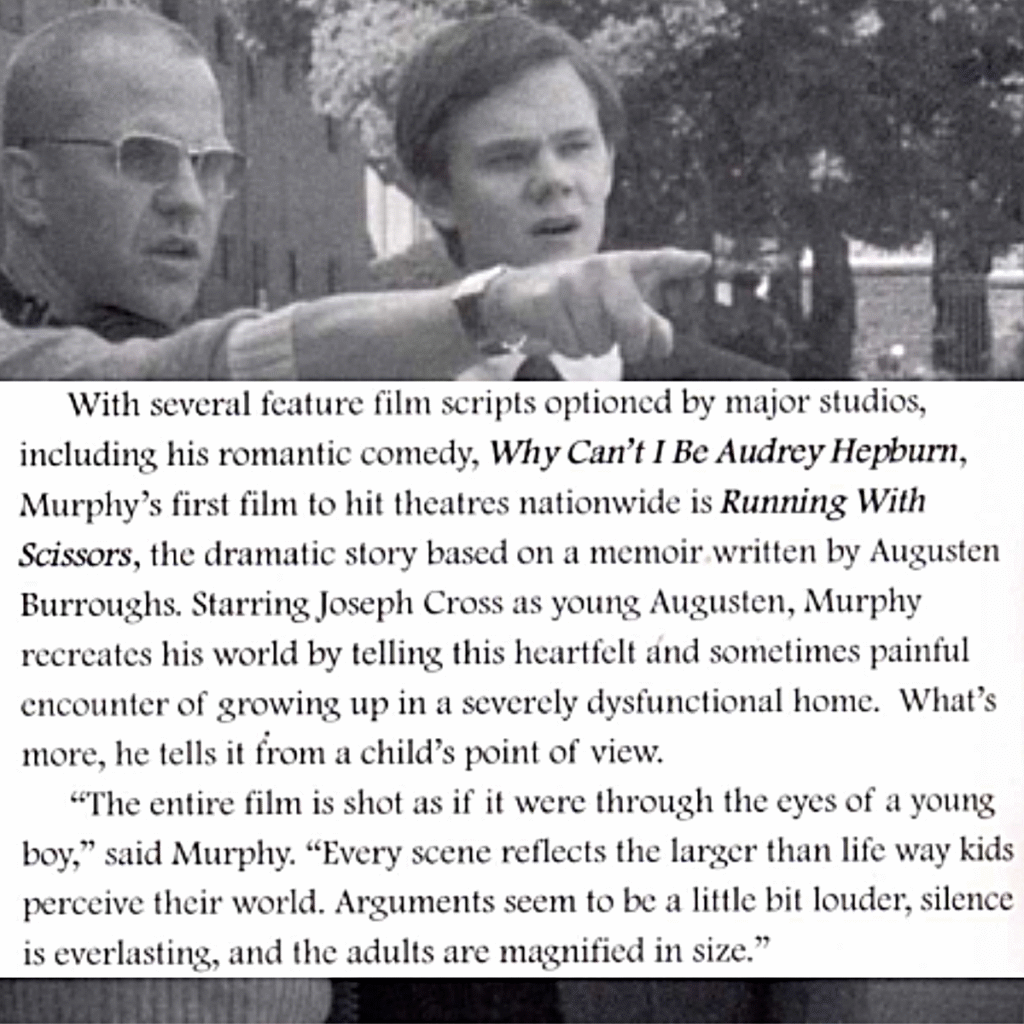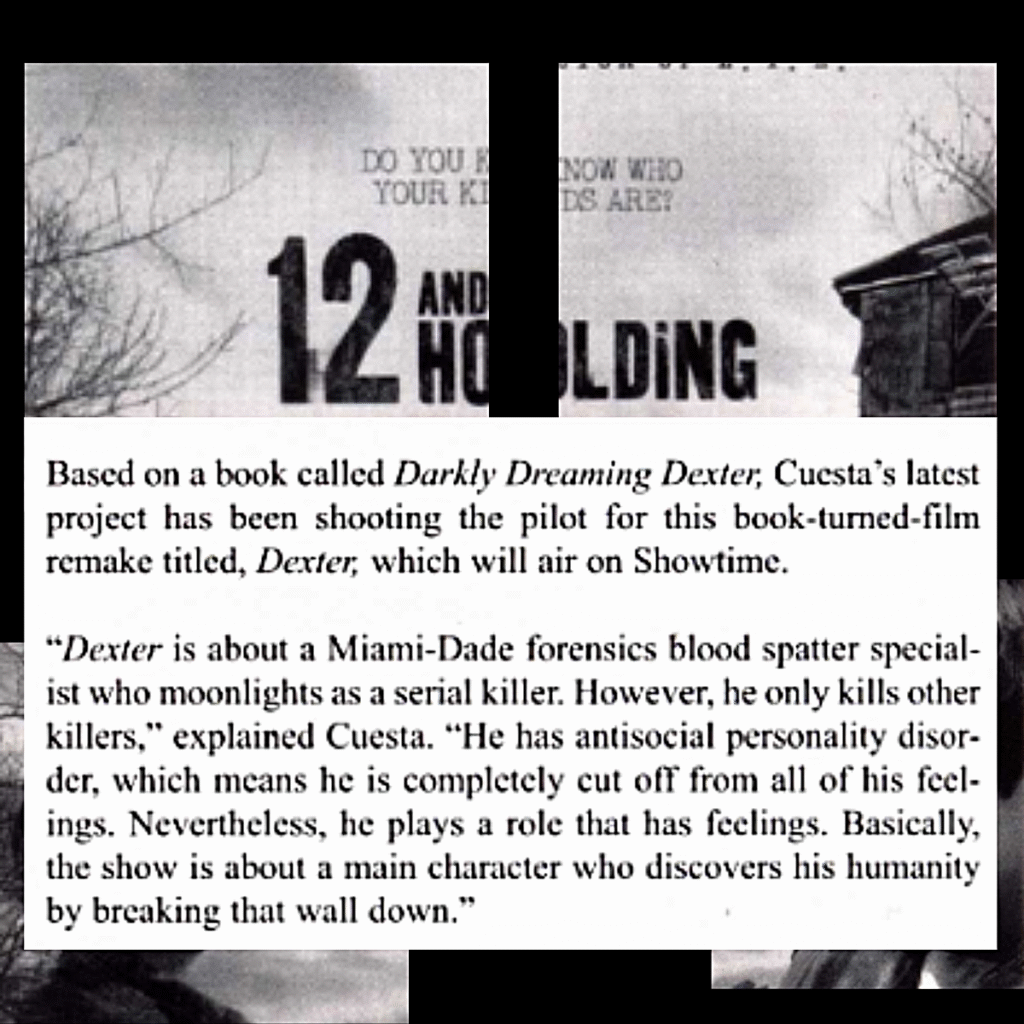In the film and television industry, there were two types of content creation for print publications. There were written reviews in newspapers and magazines that were crafted as opinion pieces featuring the latest movies to hit theaters. There were also editorial pieces where journalists used the upcoming film or TV show as a central focus, while sharing the actor’s or director’s story in its entirety. My role was in editorial.
For film, after receiving a slew of invitations from PR studios to attend screenings of upcoming releases, each journalist accepts invitations based on what they feel would be the best potential fit for their publication. Once the movie was selected, journalists began correspondence with the film studio’s PR department. Some interviews were conducted at the publication’s chosen location, followed by a photoshoot. There were others held on “press day.” And some were conducted over the phone.

Dog the Bounty Hunter, a reality TV show on A&E, was relatively new at the time. After a few series, the highlight was on Duane “Dog” Chapman. However, Myspace enthusiasts were paying attention to someone else on the show—the son of Dog.
Without any media coverage, no one knew much about this quiet yet courageous character on the scene. As a result, he stood out to me, too, and my request for an interview was successful. He flew from Hawaii to Los Angeles for two separate day-long interviews that concluded with a 9-page article in a new print publication titled Stone magazine.
Leland’s Block, By Megan Rellahan
Stone Siegel, Publisher
Ash Gupta, Photographer

Ryan Murphy began his career in journalism after graduating from Indiana University. Murphy’s start as a director transitioned after he pursued an investigative piece idea on plastic surgeons. Murphy’s intrigue with the subject led him, instead, to pitch a story to network execs that revolved around two Miami surgeons. This was the beginning of the series, Nip/Tuck.
From there, he directed Running with Scissors. Having read the book version by Augusten Burroughs, my interest in this feature was sold. On the day of the screening, I was already late, and traffic was at its peak. Ten minutes into the movie, I rushed into a dark screening room, tripped down the seated aisle, and dropped my bag. A man seated behind me did the infamous, “ssshhh.” Apologetically (and embarrassed), I turned to look at him.
For this particular film, I attended a scheduled press day, where journalists from various credible publications were in attendance. We each had set times to spend alone in a room with the director to conduct the interview. When it was my turn, I went into the room and sat across from the man who “ssshh’d” me. The man was Ryan Murphy.
Running With Ryan Murphy, By Megan Rellahan
Scott Essman, Publisher

Born in the Bronx on July 8, 1963, and raised in Dix Hills, Long Island, director Michael Cuesta began pursuing his lifelong dream, working as a newspaper intern and photojournalist in Puerto Rico during his summer vacations. Afterward, he attended N.Y.C.’s School of Visual Arts and began shooting advertising campaigns. While enjoyable, he was seeking something else. In 1995, Cuesta started writing a semi-autobiographical drama called L.I.E.
After his success with the film, he moved on to direct Twelve and Holding, an equally dark exploration of humanity. Thereafter, he began a project that, little did he know at the time, would be Showtime’s highest-rated series premiere in years. The series is called Dexter.
On The Dark Side, By Megan Rellahan
Scott Essman, Publisher